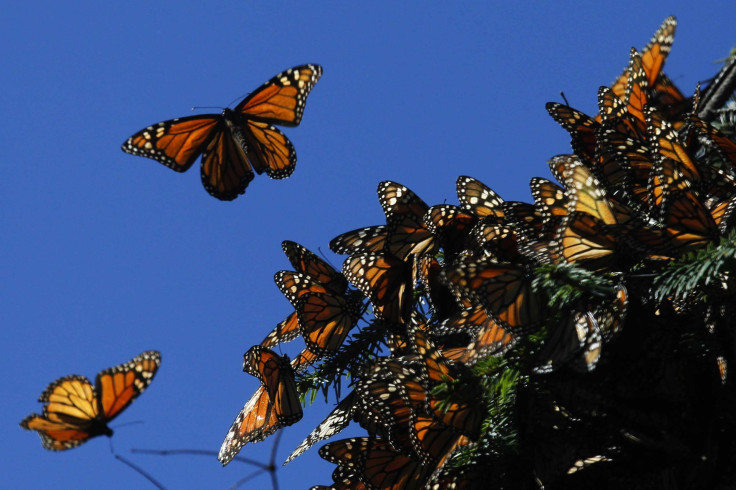Monarch Butterfly In ‘Grave Danger’ Of Disappearing, Migration Reaches Record Low

Have you noticed anything missing from your garden lately? Monarch butterflies, North America’s most recognized butterfly, are vanishing. According to a new report from the World Wildlife Fund, fewer Monarchs migrated in 2013 than in any year since researchers began keeping records two decades ago.
Every winter, the orange-winged butterflies, whose habitat range stretches all along the west coast of North America, migrate more than 2,500 miles from southern Canada and the U.S. down into Mexico. Millions of monarchs take refuge from the cold in Mexico’s temperate forests, holing up until March when they return to the north.
But over the years, the Monarchs’ numbers have declined. World Wildlife Fund researchers, who have studied the annual Monarch migration since 1993, say several factors have contributed to the butterfly’s disappearance. The biggest influences are loss of habitat and reduction of milkweed, the Monarchs’ primary food source, along North America’s western shores.
“The combination of these threats has led to a dramatic decline in the number of monarch butterflies arriving to Mexico to hibernate over the past decade,” Omar Vidal, the World Wildlife Fund director in Mexico, said in a statement. “Twenty years after the signing of the [North American Free Trade Agreement], the monarch butterfly migration -- a symbol of cooperation between our three countries -- is in grave danger.”
Eighteen years ago, the Monarch butterflies, which clump together in trees by the thousands, occupied more than 44 acres of forest in central Mexico during their winter migration. In 2012, the butterflies’ covered just 2.93 acres of forest. Last year, the Monarchs’ space measured less than 2 acres -- a 44 percent decrease from the same time the previous year.
“The migration is definitely proving to be an endangered biological phenomenon,” Lincoln Brower, a leading entomologist at Sweet Briar College in Virginia, told the Associated Press. “The main culprit is now GMO herbicide-resistant corn and soybean crops and herbicides in the USA, [which] leads to the wholesale killing of the monarch’s principal food plant, common milkweed.”
Monarch butterflies lay their eggs on milkweed plants. When the eggs hatch, the larvae feed off the plant. Researchers say that without milkweed, there are no butterflies.
"They can't lay eggs on anything else,” Christopher Singer, founder of the nonprofit Live Monarch Foundation, said in a statement, according to the Christian Science Monitor. “Can't lay it on a watermelon, can't lay it on a parsley plant. It has to be a milkweed plant."
It’s unclear what exactly would happen if the monarchs continue to vanish, but experts agree measures must be taken to make sure that doesn’t occur. The Monarch migration is big business in parts of Mexico and California, where tourists flock to witness the butterflies’ annual journey for themselves.
© Copyright IBTimes 2024. All rights reserved.






















